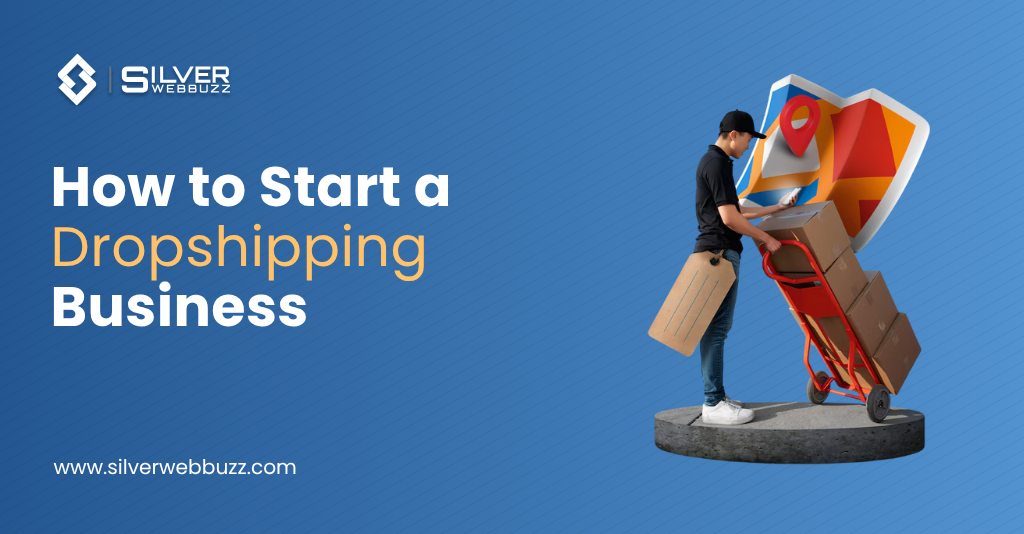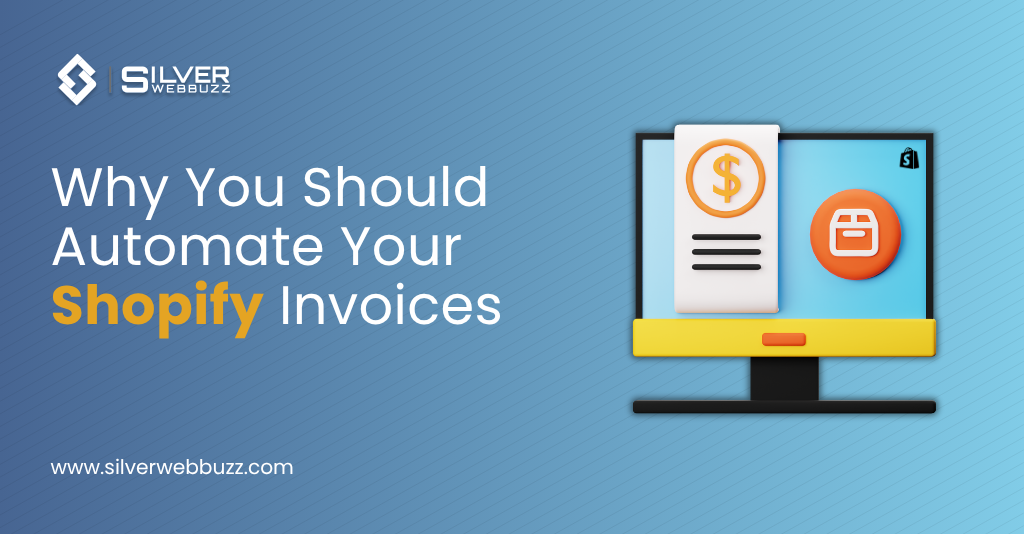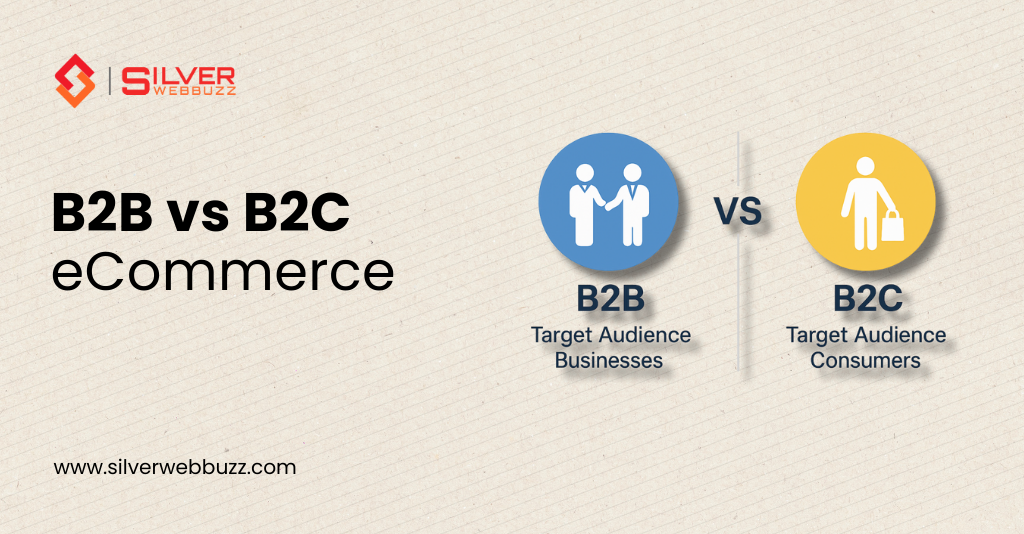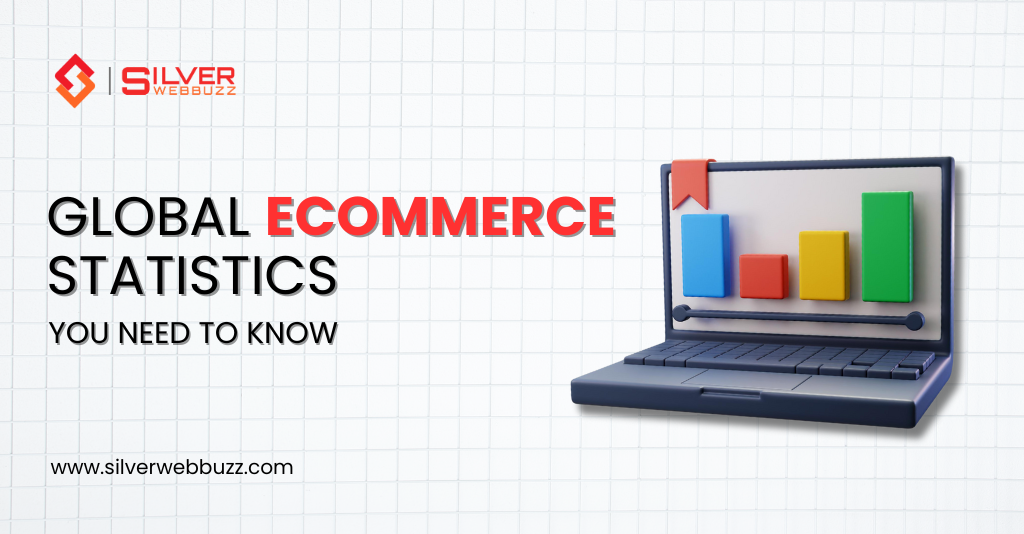In 2025, the digital landscape continues to evolve, and how to start a dropshipping business has become one of the most searched phrases among aspiring entrepreneurs. The appeal of running an online store without ever handling inventory is more relevant than ever. The rise of global e-commerce, efficient logistics platforms, and easy-to-use website builders make it possible for anyone to tap into the thriving world of dropshipping.
How to start dropshipping isn’t just about launching a store — it’s about launching a dream with minimal risk and massive scalability. In this guide, you’ll discover everything you need to know about how to start a dropshipping business in 2025, with real-life strategies and actionable tips.
Why It’s a Trending Business Model in the E-Commerce Landscape
Dropshipping is booming for a reason. In an era where speed and convenience dominate, dropshipping provides:
- No inventory management
- Minimal startup costs
- Unlimited product variety
- Flexible working from anywhere in the world
Because of this, dropshipping for beginners has become a stepping stone into the world of entrepreneurship.
Who Should Consider Starting a Dropshipping Business
- College students looking for a side hustle
- Stay-at-home parents wanting passive income
- Full-time professionals exploring a digital business
- Retirees seeking financial independence
If you’re wondering how much money do you need to start dropshipping, the good news is: not a lot! With proper planning and execution, you can start small and scale fast.
What is Dropshipping?
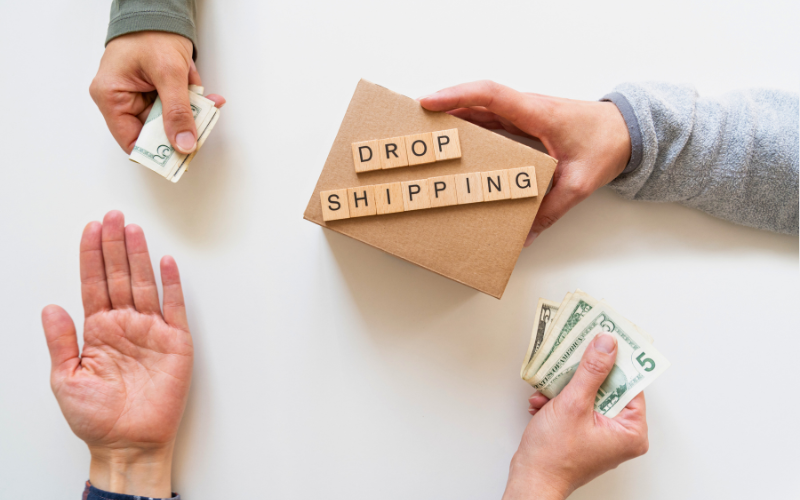
Let’s break it down simply for anyone new to the concept.
What is dropshipping? It’s a modern retail fulfillment method that allows entrepreneurs to sell products online without ever handling the inventory themselves. Instead of buying and storing products in bulk, the dropshipping model lets you partner with suppliers who handle the storage, packaging, and shipping for you.
Here’s how it works: When a customer places an order through your online store, you don’t fulfill it personally. Instead, you forward the order to your chosen supplier, who then ships the product directly to your customer’s doorstep. You earn the difference between the retail price (what the customer pays you) and the wholesale price (what you pay the supplier).
So, if you’ve been exploring how to start dropshipping or are curious about how to start a dropshipping business, this is the foundation of the model. It’s perfect for beginners who want to start a business without needing a warehouse, inventory system, or a big upfront investment.
How Does Dropshipping Work?
Understanding how to start a dropshipping business begins with learning how the dropshipping process actually works. Whether you’re just researching dropshipping for beginners or planning to launch your own online store soon, knowing this workflow will help you operate smoothly and confidently.
Step-by-Step Process of Order Fulfillment
Here’s a simplified overview of how orders are processed in a dropshipping business model:
Customer Places an Order on Your Online Store
When a customer visits your website and buys a product, the order and payment are collected by your store. This is the first step of engagement in your dropshipping business journey.
You Forward the Order to Your Supplier
After receiving the order, you pass the customer details and product info to your chosen supplier. This can be done manually or automatically through integration tools, saving time and effort.
Supplier Ships the Product Directly to Your Customer
The supplier takes care of packaging and shipping, meaning you never have to handle the product. This is one of the key reasons why people choose how to start dropshipping — there’s no need to stock or ship anything yourself.
You Earn the Profit Margin Between Selling Price and Supplier Cost
If you sold the product for $40 and your supplier charged you $20, you keep the $20 difference as profit. This is how the business stays profitable and scalable with minimal overhead.
This simple process is what makes starting a dropshipping business in 2025 highly appealing—you can run your business from anywhere in the world without ever touching the inventory.
Roles of the Dropshipper, Supplier, and Customer
To run a successful dropshipping business, it’s important to understand the responsibilities of each party involved in the supply chain.
You (Dropshipper)
Your role is to build and manage the store, add appealing products, promote your brand, run marketing campaigns, and provide excellent customer service. You’re essentially the brand owner who connects customers with great products.
Supplier
The supplier holds the inventory, processes the orders you send, and manages all logistics like packaging and shipping. Finding a reliable supplier is key, especially when you want to avoid customer complaints or shipping delays.
Customer
The customer browses and buys from your online store. They’re unaware of the supplier’s involvement and expect you to handle support and post-purchase care. Their satisfaction is what grows your brand through reviews and repeat purchases.
When you’re learning how to start a dropshipping business, remember this triangle of responsibility: you sell and market, the supplier ships, and the customer buys and reviews.
Tools and Platforms That Enable Dropshipping
To run a smooth, automated, and scalable dropshipping business, you’ll need the right tools and platforms. These make your job easier and help you focus on growth.
Shopify – The Easiest Platform for Beginners
Shopify is one of the most beginner-friendly e-commerce platforms available. It offers easy setup, beautiful themes, and hundreds of plugins to support automation. If you’re unsure how to build a high-performing store, working with a professional Shopify development company can help you create a fast, responsive, and conversion-optimized online store from day one.
DSers, AutoDS – Oberlo Alternatives
While Oberlo was once popular, tools like DSers and AutoDS have now taken its place. These platforms let you import products, automate order processing, and even monitor inventory changes in real-time.
Spocket, AliExpress, CJ Dropshipping – For Sourcing Suppliers
These platforms help you connect with global or local suppliers. Spocket is great for US/EU-based products, while AliExpress and CJ Dropshipping offer a wider international range, especially useful for niche products or budget categories.
SEMrush, Google Trends – For Research and SEO
These tools are essential when you’re just starting out. Use Google Trends to identify popular products or seasonal spikes in demand. SEMrush helps with keyword tracking, competitor research, and SEO strategy—all crucial if you want to build organic traffic and drive sales.
How to Start a Dropshipping Business in 2025
Here’s your ultimate step-by-step roadmap to learn exactly how to start dropshipping and build a profitable, scalable business in 2025. If you’re exploring how to start a dropshipping business, this guide breaks down each stage into actionable strategies to help you succeed in the booming e-commerce world.
Develop Your Business Idea
Everything begins with a brilliant business idea. In 2025, trends are evolving rapidly, so picking the right niche is crucial. Some of the fastest-growing niches include eco-friendly products, smart home gadgets, pet wellness gear, and fitness accessories. These sectors are seeing strong search volume and purchasing behavior worldwide.
Explore product categories that have staying power. Items like reusable kitchenware, ergonomic home office equipment, and custom pet tags are becoming customer favorites. Use tools like Google Keyword Planner or Ubersuggest to analyze what people are searching for.
Remember, if you’re learning how to start a dropshipping business, start with an idea that aligns with market needs and your passion. A validated, in-demand niche is the first step toward long-term dropshipping success.
Do Market Research
Great ideas need solid research. Before launching, you need to understand your target audience, their shopping behaviors, and what influences their decisions. Build clear buyer personas by defining their age, location, interests, and pain points. Are they eco-conscious millennials or busy parents seeking convenience? Tailor your offering accordingly.
Study top-performing competitors. What products are they selling? What’s their price point? How do they write product descriptions and run promotions? Tools like SEMrush can help you spy on their SEO keywords, while AliExpress reveals best-selling items.
Leverage Google Trends to measure product seasonality and rising interest. This step is critical when you’re wondering how much does it cost to start dropshipping, as a well-researched product reduces your marketing spend and increases conversion rates.
Source Your Products
Your supplier is the backbone of your dropshipping business. Whether you’re new or experienced, finding a reliable dropshipping supplier is one of the most important steps in learning how to start dropshipping the right way.
Top supplier platforms in 2025 include:
- AliExpress – Offers a wide product variety and integrates with Shopify.
- Spocket – Known for faster shipping through US and EU-based suppliers.
- CJ Dropshipping – Provides print-on-demand, warehousing, and sourcing support.
Before committing to a supplier, evaluate their shipping speed, customer reviews, return policies, and communication quality. A good supplier reduces refunds, improves customer satisfaction, and enhances your brand reputation — all critical to a successful dropshipping for beginners journey.
Create Your Business Plan
Your dropshipping business plan is your strategic guide that outlines everything from goals to operational steps. Start by setting SMART goals — these should be clear, measurable, and time-bound.
Break down your expected costs: store setup fees, marketing budgets, branding, and software tools. Typically, those asking how much money do you need to start dropshipping will find that a minimum of $300 to $1,000 is enough for a basic launch.
Also, include profit margin estimates. Ideally, you should aim for 30–50% gross margins. Outline both short-term tactics (like launching your first Facebook ad) and long-term plans (scaling with influencers or expanding to new markets). A solid business plan gives direction and helps you stay on budget.
Choose Your Business Name
Your business name is more than just a label — it’s your brand identity. Make sure it is unique, memorable, and relevant to your niche. Think about what emotions or values your brand represents.
For instance, if you’re selling eco-friendly home goods, use words like “green,” “planet,” or “earth.” Avoid overly generic names and ensure that your desired domain name is available.
Tools like Shopify’s Business Name Generator or Namelix can help you brainstorm ideas. Once chosen, secure the domain and register your social media handles — this builds trust and consistency across all platforms.
Select a Business Structure
Deciding on the right business structure is vital. Your options include:
- Sole Proprietorship – Easiest to start and ideal for beginners.
- LLC (Limited Liability Company) – Offers personal protection and credibility.
- Private Limited Company – Suitable if you’re planning to scale globally or attract investors.
Each structure has tax, legal, and financial implications. If you’re unsure, consult with a legal expert or a business consultant. Choosing the right structure early can save you future headaches and provide clarity on how you manage finances and liability as your dropshipping business grows.
Funding Your Business
One of the most common questions is, “How much does it cost to start dropshipping?” Fortunately, it’s a low-investment business model, but you still need a realistic budget. Here’s a typical breakdown:
- Shopify Plan – $29/month
- Domain Name – $10 to $15 per year
- Logo & Branding – $50 to $200
- Marketing (Ads) – $100 to $500 for initial testing
- Apps/Tools – $0 to $100 per month
So, how much money do you need to start dropshipping? For most beginners, a budget between $300 and $1000 is more than sufficient to build and launch a basic, functional dropshipping store. Consider bootstrapping or using personal savings to start, and scale gradually as your sales grow.
Register Your Business
Registering your business gives it legitimacy and ensures you’re compliant with the law. Start by registering your business according to your country’s regulations. For example:
- In India: Obtain GST registration.
- In the US: Get an EIN from the IRS.
- In the EU: Register for VAT.
Also, make sure to include privacy policies, terms & conditions, and refund policies on your website. These aren’t just legal requirements — they boost customer trust, which is essential when launching a new dropshipping for beginners store.
Develop a Brand
In 2025, branding is everything. To stand out from the competition, create a brand that speaks directly to your target audience. Start with your brand story, mission, and tone of voice. Ask yourself: what does your brand believe in, and how do you want customers to feel when they visit your store?
Design a professional logo, consistent color scheme, and compelling product visuals. If possible, invest in custom packaging or thank-you cards to elevate the customer experience.
The more emotionally connected your customers feel, the higher your retention rate. And if you’re serious about learning how to start dropshipping, branding will be your long-term competitive advantage.
Launch Your Business Website
Your website is the core of your business. Choosing the right platform matters:
- Shopify – Best for beginners due to ease-of-use and integrations.
- WooCommerce – Great for WordPress users who want more customization.
- BigCommerce – Scalable for larger product catalogs and international stores.
Design your site to be clean, fast-loading, and mobile-optimized. Essential pages include:
- Home Page – Clear brand message and top-selling products.
- Product Pages – High-quality images, persuasive descriptions, and reviews.
- About Us, Contact, FAQ, Shipping & Return Policies – Build transparency and trust.
A conversion-optimized store helps you attract and retain customers, especially when your strategy focuses on how to start dropshipping business profitably and sustainably.
Market Your Business
No matter how good your store is, it won’t succeed without traffic. Marketing is the engine behind every successful dropshipping store.
Organic Marketing:
Organic strategies lay the foundation for long-term success. One of the most effective methods is Search Engine Optimization (SEO). Regularly publish optimized blog posts targeting popular keywords like “how to start dropshipping” or “top trending products to dropship in 2025.” These blogs help build trust, authority, and drive consistent traffic over time.
Platforms like Pinterest, Instagram, and TikTok are perfect for showcasing visually appealing products. Build an organic audience by sharing engaging videos, how-to tutorials, product benefits, and customer testimonials. This traffic is free and highly targeted when done right.
Paid Marketing:
Start with small Facebook and Instagram ad campaigns targeting your buyer persona. Test different creatives, headlines, and product offers. Google Shopping Ads are also powerful for intent-based traffic that converts.
Email Marketing:
Set up automated email flows for cart abandonment, order confirmation, product upsells, and customer retention. Email marketing remains one of the highest ROI channels for e-commerce.
Influencer Collaborations:
Partner with micro-influencers who have strong engagement in your niche. They’re affordable and drive high trust and conversion rates. This tactic is especially useful for niche products and new brands looking to gain exposure quickly.
By combining these strategies, you’ll build momentum and generate sales. A smart marketing strategy is the final key in how to start a dropshipping business and scale it in a competitive market.
Benefits of Starting a Dropshipping Business
If you’re still wondering how to start a dropshipping business or if it’s the right model for you, here’s why so many entrepreneurs in 2025 are jumping on this opportunity. The advantages are both practical and powerful—especially for beginners and digital-first startups.
Low Upfront Investment – Ideal for First-Time Entrepreneurs
One of the biggest advantages of dropshipping is that it requires very minimal capital to get started. You don’t need to invest thousands in inventory or warehousing, which significantly lowers the financial barrier. This makes how to start dropshipping an attractive path for side hustlers and risk-averse entrepreneurs. Even with a budget as low as $300–$1000, you can launch a functional store and test multiple products before committing to scaling.
Location-Independent – Run Your Business from Anywhere
Dropshipping gives you the ultimate freedom to operate your business from anywhere in the world, as long as you have a laptop and internet access. Whether you’re working from a coffee shop in Bali or your apartment in New York, your store runs 24/7. This flexibility is a dream come true for digital nomads and remote-first professionals exploring how to start a dropshipping business that fits their lifestyle. You’re no longer tied to physical inventory or office space.
Scalable – Expand Product Lines Without Extra Hassles
Unlike traditional retail, you can scale your dropshipping business quickly without logistical stress. Want to go from selling 5 to 500 products? You can, without worrying about warehouse space, labor, or supply chain constraints. Scaling is as simple as adding new listings to your website and syncing them with your suppliers. This seamless growth potential is a major reason why many people research how to start dropshipping as their gateway into e-commerce.
Automation – Save Time with Tools and Systems
Thanks to tools like Oberlo alternatives, Shopify plugins, and automated email platforms, much of your business can run on autopilot. Order fulfillment, inventory updates, and customer service workflows can be streamlined using integrations. Even customer engagement, like abandoned cart emails and review requests, can be fully automated. If you’re looking for a business model that allows you to earn while you sleep, learning how to start a dropshipping business with automation in mind is the smart move.
How Much Does It Cost to Start Dropshipping?
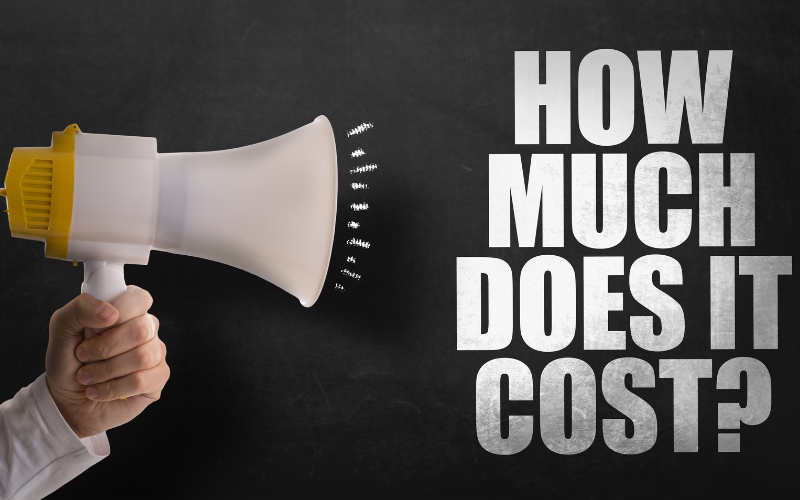
One of the biggest questions asked by aspiring entrepreneurs is: “How much does it cost to start dropshipping?” The good news is—compared to traditional business models, the financial risk is significantly lower. However, understanding where your money goes is critical for success, especially when you’re planning your dropshipping business plan.
Domain & Hosting
The first investment you’ll need is your domain and hosting. A domain typically costs around $10–$15 per year. Hosting may vary depending on the platform you choose; for instance, Shopify includes hosting in their plan, while WooCommerce may require third-party hosting services ranging from $5 to $30 per month. Your domain is the face of your brand, so don’t go for a low-quality or free domain if you’re serious about learning how to start a dropshipping business the right way.
Shopify/WooCommerce Store Setup
Platforms like Shopify and WooCommerce are popular choices for building your online store. Shopify’s basic plan starts at $29/month, while WooCommerce is free but may require additional hosting and paid extensions. If you’re not tech-savvy, hiring an e-commerce development company can streamline the setup process and provide a professional edge. A well-optimized site is crucial for converting visitors into buyers and mastering how to start dropshipping effectively.
Branding and Design
Branding helps you stand out in a sea of competitors. Expenses can include logo design, brand color palette, packaging design (if applicable), and consistent visual themes across your website and social media. Basic logo services may cost $20–$100, while a full branding kit can go up to $500 if done professionally. This is a necessary part of your dropshipping business plan that many beginners overlook—but it plays a massive role in customer trust and retention.
Apps and Tools (Oberlo Alternatives, Analytics, Email Marketing)
Running a successful dropshipping store requires a few key tools. You’ll likely need product import tools (like DSers or CJ Dropshipping), email automation tools (Mailchimp, Klaviyo), analytics plugins (like Lucky Orange or Hotjar), and review management tools. These apps may be free or cost between $10–$100 per month, depending on your needs. Tools reduce manual work and make it easier for beginners learning how to start a dropshipping business to stay efficient and scalable.
Paid Ads and Initial Marketing Spend
Marketing is often the biggest initial investment in dropshipping. Platforms like Facebook Ads, Instagram, TikTok, and Google Shopping can help you reach your audience fast. A starting ad budget of $100–$500 is common for testing products. If you find a winner, scaling can cost more. Knowing how much money do you need to start dropshipping depends largely on how aggressive your marketing plan is. Smart ad spend is essential to generate traffic and early conversions.
Typical Cost Range for Beginners vs. Advanced Setup
If you’re just starting out and planning wisely, how much money do you need to start dropshipping can be as low as $300–$1000. This covers domain, basic branding, Shopify plan, and initial ads. On the other hand, a more advanced setup with custom design, professional SEO, influencer marketing, and premium plugins could range from $2000–$5000. It’s all about your goals and how quickly you want to grow. A thoughtful dropshipping business plan helps allocate funds smartly for both short-term results and long-term scaling.
Conclusion
If you’ve read this far, you’re already serious about learning how to start a dropshipping business in 2025. From developing your idea to sourcing products and launching your website, every step has the power to unlock long-term profitability and freedom.
Now is the best time to act. With new AI tools, faster shipping networks, and global demand rising, how to start dropshipping is easier and more rewarding than ever before.
Final tip: To build a powerful, conversion-optimised online store, consider partnering with an experienced eCommerce web development company like Silver WebBuzz, which specializes in custom Shopify store development and eCommerce business solutions. Their expert touch can maximize your chances of building a scalable and successful dropshipping empire.
